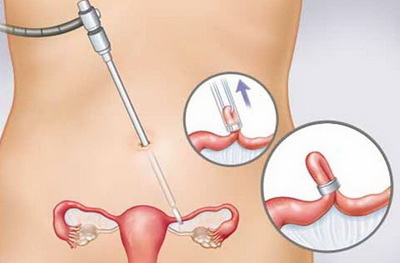dressing fallopian tubes- most effective method contraception, which is performed surgically. It can be carried out only with the consent of the woman of her own free will or for medical reasons. The latter concerns the presence of diseases in which pregnancy is highly undesirable.
Types of contraception
Currently, there are such methods of contraception:
Postoperative period and complications
The doctor will then make another small incision to insert an instrument that will be used to block the tubes. There are several ways to do this, the pipes can be heated, cut and tied through the points, or can be folded and tied with an elastic band or a metal clip. After the procedure is complete, the doctor will make several stitches to close the incisions in the abdomen.
Tubal ligation can also be done immediately after childbirth, whether by vaginal or caesarean section. At this time, the uterus is still tall enough that the doctor can easily visualize the tubes without enlarging the abdomen with carbon dioxide. The procedure usually takes about 30 minutes. After eight hours, you will be moving normally, although the pain may last for several days. Check with your doctor if abdominal pain or swelling increases rather than decreases. You will need to wait a few days or even a week to start having sex or having sex.
- physiological;
- barrier;
- hormone;
- intrauterine;
- operating
All these types of contraception have positive and negative sides, and when using them, there are drawbacks and a small percentage of inefficiency, i.e. pregnancy can occur in 0.5-1% of cases. The surgical method gives a 100% guarantee, it is currently used by more than 165 million women.
How is sterilization performed without surgery?
No incision or abdominal incision. Once they are in place, the implants stimulate the growth of benign tissues that permanently block the fallopian tubes. The procedure usually requires only local anesthesia and can take anywhere from a few minutes to an hour and a half. Except for mild cramps abdominal cavity, you will probably feel good and ready to continue with your regular routine that day.
Will sterilization affect my libido or menstruation?
Within three months of the implants being placed, you will have an X-ray examination to check that the fallopian tubes are effectively blocked. Until then, you will have to use another method of contraception.
What is the effectiveness of these sterilization procedures
Sterilization without surgery is even more effective. In clinical studies, only 1 in 500 women who choose this method will become pregnant after two years.Medical sterilization. Legal aspects
Until 1993, tubal ligation was carried out exclusively for medical reasons, and then order No. 303 of the Ministry of Health of the Russian Federation “On the use of medical sterilization of citizens” was issued, which allows female sterilization to be performed by surgery. This order contains instructions on the procedure, permission and conduct of surgical contraception for women. It follows from this document that such an operation can be carried out only at the written request of a woman over 35 years old who has two or more children. In cases of medical indications, age and the presence of children are not taken into account, but consent is also required.
If you become pregnant despite undergoing a sterilization procedure, contact your doctor immediately. The risk is greater than you have an ectopic pregnancy or an ectopic pregnancy in which an egg is implanted outside of the uterus, usually in one of the fallopian tubes.
Is salpingoclasia reversible?
Only 20 to 40 percent of women with fallopian tube fractures become infants. If the tubes have been closed by cauterization, it is much more difficult to reconnect them, as the heat of the cauterization destroys their delicate inner layer. If the tubes have been blocked through implants without surgery, then reversion is even less likely.
This instruction describes the procedure for registering a woman for an operation if there are contraindications for carrying a pregnancy. This is possible after a medical report, which is certified by specialists and the seal of the institution. Sterilization of persons with mental illness is carried out only after a court decision and upon establishing the incapacity of a citizen.
Is sterilization a good option to avoid conception after childbirth?
If you are 100 percent sure that you don't want to have more children, sterilization can be good option. You don't have to take pills every day or have to put on or apply anything before sex, which is a big advantage for busy moms. In addition, unlike other methods of contraception, salpingoclasia does not interfere with breastfeeding. Like any surgical procedure, tubal ligation carries some risks, although rare, including infection and excessive bleeding. If you change your mind, the reversal cost will be high and there is no guarantee of success. . In many cases, we have heard about tubal ligation as an opportunity to avoid more children.
In case of medical indications for tubal ligation in women, an appropriate entry is entered in the history of the disease (birth), certified by the signatures of the specialist doctor, the attending physician and the head of the institution or health department.
There are a number of medical indications for female sterilization as a method of preventing pregnancy:
This is usually done by women who are advanced in their fertile stage and have children, a family. Also in cases where pregnancy poses a great risk to the child or mother, or the natives were repeated in attempts to get a family. But really, what is a tubal ligation? What are its benefits and risks?
Tubal ligation is a surgical process to sterilize women. This is done to avoid and the area where the operation is performed is the fallopian tubes or uterus, which are the channels that connect the ovary, where the eggs are made and released, to the uterus. Therefore, the purpose of performing a tubal ligation operation is to prevent the connection of the uterus and ovaries and, therefore, the sperm cannot reach the eggs and cannot reach the uterus.
- diabetes mellitus in severe forms of manifestation;
- leukemia;
- heart defects with circulatory failure II - III stages or pulmonary hypertension;
- liver failure or active hepatitis;
- repeated caesarean section in the presence of living children, etc.
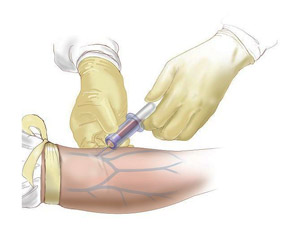 If a woman has diseases not covered by this list, the issue is decided by the commission on an individual basis.
If a woman has diseases not covered by this list, the issue is decided by the commission on an individual basis.
Tubal ligation is a surgical procedure that helps prevent pregnancy by cutting out the fallopian tubes. Unlike other methods of contraception, it is permanent, so it is only recommended if a woman does not want to have more children. After tubal ligation, sperm cannot reach the egg and cannot travel to the uterus. That is why the egg is dissolved and absorbed by the body.
If you are thinking about undergoing this procedure, you may be interested in today's topic. We will talk about recovery after tubal ligation, which will largely depend on the method used, among other factors. Restoration of tubal ligation: symptoms.
Article 37 of the “Fundamentals of Citizens' Health Protection” permits VCS (Voluntary Surgical Sterilization) to be carried out in municipal or state institutions with a license to this species activities. A gynecological clinic in Moscow has such a license, and only the consent of the woman is required for sterilization.
Need for counseling
Before the operation of tubal ligation, a consultation is held for the woman to make a final decision. In this case, objective information should be provided that will help the woman agree or refuse the desire to have her tubes tied. At the same time, a woman must know that:
During recovery from tubal ligation, there is often some discomfort around the incision site, fatigue, abdominal pain, and swelling. Your doctor may recommend the use of an analgesic to relieve these discomforts. You should avoid using aspirin because it increases the risk of bleeding.
You should be aware that this procedure may cause menstrual irregularities. It is normal for a period to undergo some changes that are not present during a cycle, that you see minor changes, among other changes. Restoring tubal ligation: everything to avoid.
- she and her partner may use other methods to prevent unwanted pregnancies;
- tubal ligation can have various negative consequences;
- female sterilization is a surgical intervention;
- after ligation of the fallopian tubes, pregnancy is impossible;
- she can change her mind at any time prior to female sterilization and choose another method of contraception.
When not to do DHS
There are contraindications for tubal ligation surgery. It:
doubts about the effectiveness of the operation;
The consequences of tubal ligation in various ways
Although you can take a bath 48 hours after the procedure, you should avoid rubbing or forcing the incision site for at least a week. Similarly, you shouldn't make any strenuous effort or have sex for a couple of weeks. It's normal for the stitches to start to dissolve during tubal ligation repair, but you should see your doctor if you need to go back to your consultation to follow up. It is important that you see your doctor if you experience fainting, fever, abdominal pain that gets worse over time, bleeds or discharges at the incision site.
- inflammatory processes: metritis, salpingitis, ophoritis;
- obesity III - IV degree;
- oncological process of the genital organs;
- adhesive process;
- colon tumors;
- the impossibility of anesthesia;
- mental retardation.
In each case, all the positive and negative sides, possible complications are taken into account before the tubal ligation is performed.
Frequently asked questions about pipe ligature restoration. How long do I have to wait to get back to work? You can resume your normal activities 2-5 days after surgery. You can have sex as soon as your doctor already recommends it, but you usually have to wait at least one week after surgery.
It is important that you feel comfortable when you resume intercourse. Will there be a change in my sexual life after tubal ligation? In fact, most women love sex more because they know they can't get pregnant. How long does it take for tubal ligation to recover? This will largely depend on your pain tolerance, overall healing ability, and the type of anesthesia used during the procedure.
Tubal ligation. Pros and cons
It is positive that operations are currently carried out in a gynecological clinic and the likelihood side effects minimal. At the same time, a 100% guarantee of this manipulation is achieved. At the same time, the menstrual cycle is not disturbed, libido does not suffer, weight does not increase, the general condition does not change. Tubal ligation is possible during cesarean section. The negative is that this is an operation, after which there may be complications in the form of weakness, dizziness, nausea, vomiting, pain in the lower abdomen, bloating and flatulence, and sometimes spastic pain. And after such an operation, pregnancy will never occur, but there is a possibility ectopic pregnancy. It should be remembered that surgical sterilization does not protect against genital infections.
Is tubal ligation 100% effective in preventing pregnancy? Although the failure rate is quite low, some women may become pregnant after the procedure. In this case, pregnancy can develop normally, but there will always be an increased risk. It should be clarified that the percentage of women who become pregnant after ligation is very low.
Is tubal ligation surgery worth it?
Are there any complications associated with tubal ligation? Possible complications include infection, bleeding, reaction to anesthesia, and damage to other nearby organs. Other related topics. Scientific names are always difficult to pronounce. Thus, female sterilization is called a salpingectomy, although it is said to shrink test tubes. When salpingectomy is performed with multiple ligands, it is Yun's ring salpingectomy. In this case, the public believes that the tubes are ligated or tied, but that they have not been cut.
Principles and methods of female sterilization
Tubal ligation is an irreversible method of contraception. The main requirements for this manipulation are: safety, availability (the cost is covered by medical insurance), efficiency: pregnancy cannot occur after such an intervention. Sometimes it is possible to restore the fallopian tubes, their patency, by performing microsurgical operations. This is real only in a gynecological clinic in Moscow.
The truth is that ligating, cutting, tying, or tearing off the fallopian tube produces the same obstruction effect. What is a salpingectomy? It is currently performed as an outpatient surgery; That is, the patient leaves the hospital a few hours after the operation. It can also be done during another operation, such as during a caesarean section or when a pelvic tumor is removed.
Surgery, as a permanent way to avoid pregnancy, is one of the most used methods, both in the world and in our country. Until recently, Costa Rica required the approval of the Costa Rican Social Security Fund or the Board of Physicians to indicate the medical basis for such proceedings. Only pregnant women who were at risk to their health or the health of their unborn child had access to this operation.
Tubal ligation, pros and cons of various surgical approaches
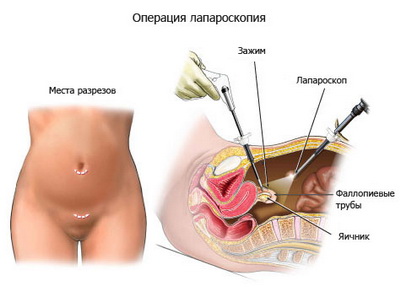 DHS can be performed by various accesses. This is determined by many factors, reasons, the condition of the woman, the availability of equipment and the qualifications of the doctor, so tubal ligation is possible through the following methods:
DHS can be performed by various accesses. This is determined by many factors, reasons, the condition of the woman, the availability of equipment and the qualifications of the doctor, so tubal ligation is possible through the following methods:
Currently, couples can opt for this method even if they have no medical reason to justify it; That is, today it is presented as an option among a wide range of contraceptive methods. Are there different kinds operations? There are a number of surgical methods for performing a salpingectomy. In Costa Rica, the most commonly used techniques are jopping salpingectomy and laparotomic salpingectomy.
First, an incision is made at the navel and a lighted tube called a laparoscope is inserted into it, which has a clamp capable of ligating the uterine horn. Laparotomy consists of making an incision at the level of the pubic hair. With the fingers are tubes that are cut directly with scissors or a scalpel.
- Laparoscopy. This is the most safe way tubal ligation. It can be performed on an outpatient basis under local anesthesia. The operation is minimally invasive, does not leave scars on the skin, the rehabilitation period is short - about 7 days.
- Laparotomy. Tubal ligation during caesarean section. At the same time, DHS is not specially carried out, but it is clarified before delivery with the signing of a written consent.
- Minilaparotomy. This method is used after childbirth and is applied in the first days after the operation. This intervention is performed under local anesthesia and on an outpatient basis. Tubal ligation - the pros and cons, its effectiveness, the number of intraoperative and postoperative and side effects, the pace of rehabilitation - the same as with laparoscopy. Therefore, this access is considered as an alternative to tubal ligation by means of a laparoscope.
- Colpotomy. Such operations are carried out only in a hospital. Access is carried out through the rectal-uterine space. The advantages of this method is its general availability - it can be carried out in a gynecological clinic or hospital; economic benefit - no expensive equipment is required; no scars on the skin. However, with this tubal ligation, infection is possible, and recovery with this method is 1-1.5 months, during which it is impossible to live sexually.
- Hysteroscopy. Attempts were made to DHS by means of a hysteroscope through the cervical canal. However, this experience has not been widely used due to the high frequency of complications and failures, since the mucous membrane of the fallopian tube is exposed to chemical or biological adhesives.
Anesthesia for such operations is selected depending on the type of access and the general condition of the woman. It can be general anesthesia, epidural and local anesthesia.
How does a salpingectomy work? The surgical principle of these operations is simple. It is based on two main phenomena associated with tube pregnancy. On the one hand, fertilization occurs, i.e. the union of the egg with the sperm; And, on the other hand, this fertilized egg - the unborn child - must move the entire chest in order to reach the matrix, where it will remain for nine months. These two steps are not possible if the fallopian tube or fallopian tube is separated.
This method is very effective because it has a failure rate of less than one pregnancy for every two hundred women operated on. What is done with tissue removal during surgery? The segment removed from the tube is evaluated by a pathologist who performs a microscopic examination to verify that what was cut was actually a tube and not another structure. This procedure, called a biopsy, gives the doctor confidence about his procedure and peace of mind for the patient.
Tubal ligation methods
There are several types of tubal ligation. DHS is carried out mainly through:
- dressing with silk ligature;
- ligation and incision of the fallopian tube;
- cauterization;
- installation of tubal implants;
- by applying special clips.
The first method has rarely been used recently, mainly by experienced doctors. The rest are widely used. Applying clips to the fallopian tube is in some cases considered reversible contraception, since over time, at the request of the woman, they can be removed. After this, the fallopian tubes are restored, in which case pregnancy can occur.
A new technique is the installation of tubal implants. It is carried out under the control of ultrasound and hysteroscopy. At the same time, catheters are inserted through the cervix and uterine cavity into the fallopian tubes, which do not allow spermatozoa to move. Healing and complete infection of the lumen of the tube occurs within a few (3-4) months. During this time, the possibility of pregnancy is not excluded. Only after a control hysteroscopy, showing that the fallopian tubes are completely obstructed, DHS is considered consistent. However, if pains begin, sanious discharge, it is urgent to consult a doctor to exclude an ectopic pregnancy.
Contraindications for female sterilization after childbirth
Women after repeated births often apply for DHS. The operation can be performed with a simple mini-laparotomy access. However, there are absolute contraindications. It:
- a long anhydrous period during childbirth, more than 12 hours;
- bleeding in postpartum period or after surgery
- preeclampsia or eclampsia during childbirth;
- acute infection;
- severe obesity.
With such a pathology, it is possible to tie the tubes after some time, while the access can be changed. 
How to behave after surgery
Tubal ligation with laparoscopy or with another method is an surgical intervention and some rules must be followed. You can take a shower after closing the incision site. During the week, heavy lifting, physical activity, and sexual activity should be avoided. It is necessary to prevent constipation and after 2 weeks it is recommended to visit a doctor.
Consequences of tubal ligation
Complications arise during the creation of access, during the operation and after it. The complication rate after all types of sterilization is less than 2%. The overall mortality after DHS is about 3-20 per 100,000 procedures.
It is necessary to distinguish between early and late complications after tubal ligation:
- Early: bleeding, bowel injury, development of septic infection.
- Late: violation in the menstrual cycle, heavy bleeding, ectopic pregnancy, mental disorders.
At the same time, complications are possible during anesthesia, no matter what method the tubal ligation is performed, laparoscopy, laparotomy, or any other method mentioned.
How much does a tubal ligation cost
The price of DHS is not set by any regulations. AT Russian Federation tubal ligation can be done at any municipal or public institution without thinking about the cost of the procedure. All costs for medicines, rehabilitation, equipment are covered by insurance medicine payments. Therefore, after a woman carefully considers the issue of DHS - female sterilization, a comprehensive examination, the establishment of contraindications of this kind, the operation can be performed in any gynecological hospital or outpatient clinic. The woman should be given an opportunity to think carefully about her decision regarding sterilization. Therefore, the question: how much does tubal ligation cost in any gynecological institutions, except for private ones, is considered inappropriate. In private clinics, when calculating the cost of the operation, the method of conducting, the type of anesthesia, the length of the recovery period and other factors are taken into account, so prices may vary.
Who should not use surgical contraception
A woman should think carefully before deciding on DHS. Do not do tubal ligation:
- women under 35;
- with unsuccessful attempts of other methods of contraception;
- if there have been previous pregnancies with complications;
- single women or without apparent stability in relationships, because after tubal ligation, a woman will never be able to get pregnant.
There is currently big choice methods and methods of contraception. And you can always choose the most optimal method for a woman's body. Of course, abortion is not an option, but it should be remembered that after sterilization, if we are not talking about tubal implants, the restoration of the fallopian tubes is impossible.
Effective methods for preventing unwanted pregnancy have always been topical issue for women. Today, there are many ways to prevent conception, but all of them are not without flaws, and the likelihood of pregnancy, although scanty, is. Tubal ligation is one of the most effective ways contraception, which is carried out surgically.
After ligation of the fallopian tubes, the possibility of fertilization and development of the embryo is completely excluded, therefore the result of the procedure in the form of infertility is considered irreversible. This is always made known to a woman who, for some reason, decided on surgical sterilization.
The indications for tubal ligation are strictly defined, and a patient who wishes to have such an operation signs documents confirming her consent and awareness that pregnancy will never occur again.
It happens that after dressing, after a few years, a woman's life circumstances change, she may get married again, want to have another child, but infertility caused by the operation will not give such an opportunity, so doctors suggest that you carefully consider your decision, consult with life partner or close relatives.
As a rule, surgical sterilization is carried out when there are medical contraindications for subsequent childbearing, for example, a serious illness of a woman. Much less often, the operation is used solely for the purpose of contraception in the full health of the patient.
Advantages and disadvantages of surgical sterilization
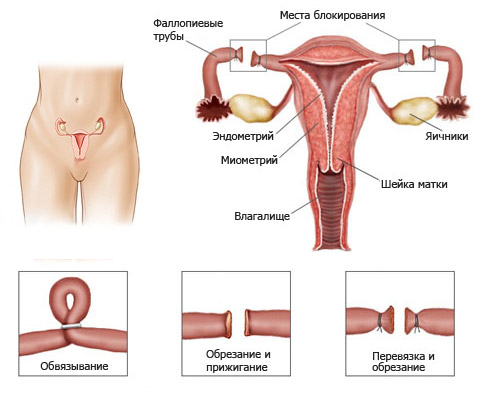
tubal ligation
The fallopian tubes play a transport role for the egg released from the ovary, here it is fertilized and delivered to the uterine cavity for further development embryo. The purpose of tubal ligation is to exclude the possibility of meeting germ cells, so pregnancy will not occur after the operation under any circumstances.
It is believed that it is impossible to get pregnant after the operation, however, isolated cases of spontaneous restoration of tubal patency are known. Probably, the reason for this is a violation of operational technology or the choice of the wrong method of manipulation. It is possible to restore the patency of the pipes with the help of various plastic surgery which are very complex and do not guarantee a positive result.
If a woman after bandaging wants to have a baby, then most likely she will have to turn to reproductive specialists who can offer the method of in vitro fertilization (IVF). This method of childbearing also does not always give one hundred percent result, it is complex, expensive and often difficult both physically and emotionally for the potential future mother therefore, in the case when a woman cannot be completely sure that there will be no desire to have a child, it is better to refuse bandaging.
Tubal ligation is an operation that, like any other radical impact, is not without its pros and cons. Of course, the complete elimination of the likelihood of pregnancy can be considered an undoubted advantage, but the disadvantages should not be ignored.
Among advantages of the method compared with other methods of preventing pregnancy indicate:
- Zero chance of pregnancy in the future;
- Lack of influence on the hormonal background, general condition and libido;
- Possibility of bandaging after caesarean section.
The disadvantages of tubal ligation are:
- The possibility of complications after surgery - bleeding, inflammation, etc .;
- irreversible infertility;
- The risk of ectopic pregnancy in violation of operational technology;
- The need for anesthesia.
It is not difficult to notice that the complete absence of the possibility of becoming pregnant in the future is attributed by experts to both the advantages and disadvantages of the method. This is understandable, because the main goal - sterilization - is successfully achieved, but there is almost never a full guarantee that a woman will not regret her decision. Moreover, statistics show that more than half of the patients wished to restore fertility in the future.
An important advantage of surgical sterilization is the absence of its influence on the hormonal background. Crossing the tube does not affect the functioning of the ovaries, hormones are released in the right amount according to the age of the woman, the menstrual cycle does not change.
Indications and contraindications for tubal ligation
Indications for surgical sterilization are:

- A woman's unwillingness to have children in the future if she already has at least one child and she is over 35;
- Medical reasons that make pregnancy and childbirth dangerous for the health and life of a woman are severe pathology of the heart, lungs, kidneys, malignant tumors, genetic anomalies that will be inherited by offspring, decompensated diabetes mellitus, etc.
In both cases, a woman’s written desire to ligate the fallopian tubes is necessary, consent to the operation must be signed by the woman herself and certified by specialists, but if the presence of children is taken into account with a voluntary desire to tie the tubes, then with medical contraindications to pregnancy and childbirth, ligation can be performed even in their absence.
Surgical sterilization of women with severe mental pathology is possible, while the patient is recognized as incapacitated, and the decision on tubal ligation is made by the court.
Contraindications for surgical contraception- inflammatory processes in the small pelvis, a high degree of obesity, tumors of the genital organs and intestines, a strong adhesive process in the cavity of the small pelvis. The operation may not be possible due to general severe diseases of the internal organs, making anesthesia and surgery very risky.
Preparation for the operation and its technique
At the stage of preparation for a tubal ligation operation, a woman must undergo a series of examinations:

These diagnostic procedures can be carried out at your clinic until the moment of hospitalization, but some of them (coagulogram, gynecological examination and smear) can be repeated immediately before the operation. According to the indications, an ultrasound of the pelvic organs is performed, in all cases the probability of an already occurring uterine pregnancy is excluded.
At any time during the preparatory period, the woman may withdraw from the planned intervention if, for any reason, she changes her mind. At this stage, she has to repeatedly answer the question of her absolute certainty in the need for sterilization, so there are cases of tubal ligation refusals.
Tubal ligation surgery lasts an average of about half an hour, is performed under general anesthesia, spinal anesthesia is acceptable when the patient is conscious during the intervention. For manipulation on the pipes, laparoscopic access, minilaparotomy, open laparotomy are usually used. In more rare cases, hysteroscopic and colpotomy approaches are used.
The technique of intervention and anesthesia depend on the condition of the woman, the qualifications of the staff, the availability of appropriate equipment for minimally invasive operations.
Before the intervention, a cleansing enema is performed in the evening to empty the intestines and prevent some unpleasant consequences after anesthesia and the imposition of pneumoperitoneum. A gynecologist and an anesthetist are talking to the patient. The last meal is in the evening, with severe anxiety, sedatives or sleeping pills may be prescribed at night.
Laparoscopy
Laparoscopic tubal ligation is the most popular surgical technique. Its advantages are a short rehabilitation period, the possibility of local anesthesia and outpatient treatment, the absence of significant and noticeable scars on the skin.
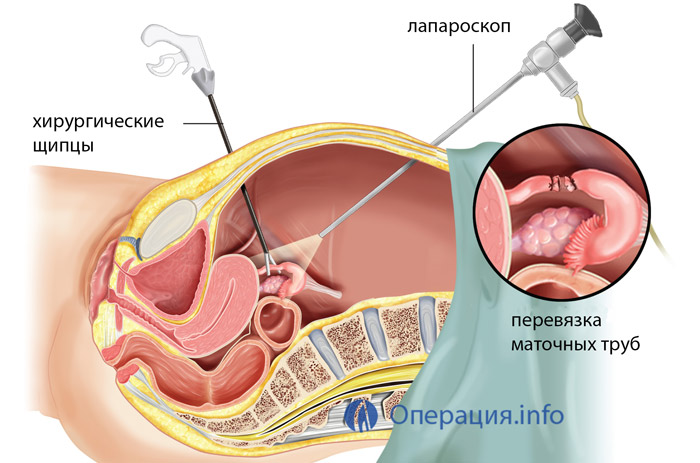
laparoscopic tubal ligation
During laparoscopy, instruments, a camera and a light guide are inserted through small holes in the abdominal wall, and the abdominal cavity is filled with carbon dioxide to improve visibility. When the surgeon, after examining the internal genital organs, reaches the tubes, the violation of their patency can be achieved by electro- or photocoagulation, laser evaporation. These methods have as their main risk the possibility of heat damage to the surrounding tissues, in order to prevent which the abdominal cavity is filled with a sufficient volume of gas and flushed with saline to cool it. Mechanical violation of the patency of the pipes during laparoscopy is carried out using special rings, clips, brackets.
Minilaparotomy
Minilaparotomy is a fairly simple way to get to the tubes and tie them, it does not require expensive and complex equipment for the operating room and a very highly qualified gynecologist. With a minilaparotomy, a small incision of about 3 cm is made above the pubic joint, through which the doctor opens the way to the pelvic organs, examines them, finds the tubes and breaks their patency mechanically or by another method.

minilaparotomy
The advantages and disadvantages are similar to those of the laparoscopic approach, but this type of surgery is preferred after childbirth. It is not advisable to use it for uterine myoma, severe obesity. Minilaparotomy is considered as an excellent alternative to laparoscopic surgery in the absence of appropriate equipment and a trained surgeon.
Laparotomy
During laparotomy, the abdominal cavity is opened through a suprapubic or median incision. This method of operation can be used for cesarean section, after which ligation of the fallopian tubes is also possible.
Hysteroscopic and colpotomy approaches
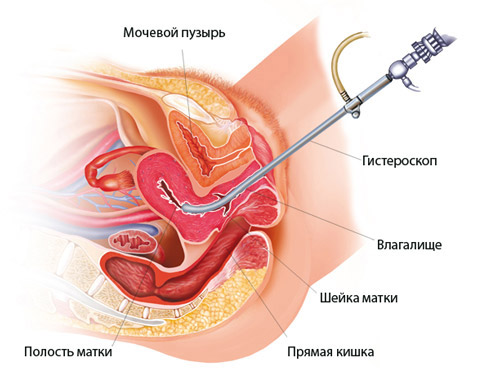 In the presence of hysteroscopic equipment, a violation of the patency of the fallopian tubes can be carried out directly when exposed to the inner layer of the tube. The basis is usually coagulation, that is, thermal damage to the mucous membrane. Hysteroscopic sterilization does not require abdominal incisions, the equipment is inserted through the vagina into the uterine cavity, then to the tubes.
In the presence of hysteroscopic equipment, a violation of the patency of the fallopian tubes can be carried out directly when exposed to the inner layer of the tube. The basis is usually coagulation, that is, thermal damage to the mucous membrane. Hysteroscopic sterilization does not require abdominal incisions, the equipment is inserted through the vagina into the uterine cavity, then to the tubes.
With colpotomy access, they enter the pelvic cavity through the vagina, making an incision in its posterior wall and penetrating through the tissue between the vagina and the rectum. The tube is pulled into the wound, bandaged, then the tissues are sutured. The advantage of access is relative simplicity, availability and cheapness, the absence of skin incisions and sutures, among the most significant disadvantages is the likelihood of infection.
To disrupt the patency of the fallopian tubes with the above interventions, they can use:
- Ligation with suture material with excision of a fragment of the pipe;
- Rings and clips are less traumatic, give more chances for the restoration of childbearing function through plastic surgery;
- Coagulation by electric current, laser, ultraviolet.
Surgical sterilization can be performed in different dates- in the absence of pregnancy in the second phase of the cycle, after a medical abortion, six weeks after delivery or during a caesarean section. After natural childbirth, tubal ligation is possible within the first two days or after three days to a week.
Postoperative period and complications
The postoperative period does not have any significant differences from that in other operations. If the tubes were tied during colpo- or hysteroscopy, then in a day the patient can leave the clinic, after laparoscopy, observation is required for 2-3 days. The postoperative period with laparotomy takes 7-10 days, after which the sutures are removed.

Surgical sterilization requires physical rest for a week, the same period you must refrain from sexual activity. For the first few days, water procedures are highly discouraged.
Tubal ligation surgery is considered safe regardless of the method that was used. However, in rare cases there are complications. During the intervention, there is a risk of bleeding and damage to other abdominal organs, especially when coagulating the tubes. If the operation technique is not followed, the risk of infection and inflammation in the pelvic organs increases. Allergic reactions to anesthesia medications are very rare. Among the long-term effects are possible, although unlikely, menstrual irregularities, bleeding, tubal pregnancy.
When ligating the fallopian tubes for caesarean section, the consequences are similar to those outside childbirth. Sterilization does not affect the hormonal function, milk production and feeding of the baby. Both sexual behavior and the general well-being of the mother do not change, but due to low awareness and the lack of clearly formulated indications for puerperas, surgical ligation of the fallopian tubes in this category of women is quite rare.
Tubal ligation surgery in public hospitals is carried out free of charge under the CHI system. The costs are borne by the state. If desired, it is possible to undergo paid treatment in private clinics or even in public ones, but with the right to choose more comfortable conditions for staying in a hospital.
The cost of tubal ligation ranges between 7-9 and 50 thousand rubles. The price includes payment for the operation itself, consumables and medicines, examinations, stay in the ward, food, etc.

